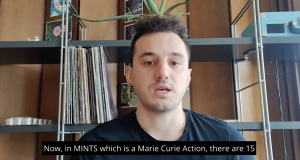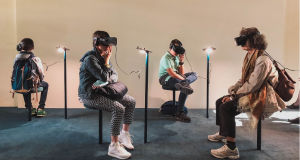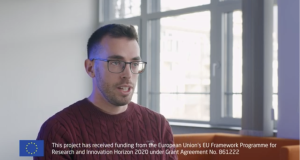Published on: May 13, 2022
This week we meet Javad Ebrahimizadeh, ESR 2 from KU Leuven, Belgium.
Tell us about yourself
A person who smiles, who is loving and who makes mistakes. I enjoy socializing with people once in a while and at the same time I also enjoy being alone. I have many friends because of my cheerfulness. My friends, cousins and other family members like to spend time with me.
What do you do for fun?
I go swimming or running. I enjoy social gatherings, especially barbecues.
Tell us something that no one knows about you
I have a talent for architecture. I learned a bit about civil engineering as well from my father.
What has been your favorite part of living in your host country?
In Belgium, the social activities are so fascinating. We see a lot of events everyday in the city, especially Brussels. Dancing and music are quite popular here.
Tell us a bit about your home country!
My home country Iran is a multicultural country where different cultures live together. You can taste different types of foods. People are friendly and lovely.

What do you work on?
My PhD involves designing a low RF complex mm-wave phased-array receiver for a cell-free architecture. Deployment of conventional cellular wireless systems at mm-wave suffers from high pathloss and wide delay spread. To overcome this, a cell free architecture is proposed. The transceivers are spread over short distances to cover shorter distances. These transceivers are low power, low cost and serve multi-users. My PhD project focuses on receiver architecture. The receiver will have the capability to connect to multi-access points simultaneously. The objectives are to design the array and subarray, a technique for beamforming and beam training.
Why did you choose this topic?
I had experience in microwave sensing for bioelectromagnetics but not much with wireless communication. I chose this position to delve deeper into wireless communication and gain practical experience.
How did you decide to do a Phd?
PhD is an advanced level of education that gives the opportunity to enhance your technical knowledge and gain professional and social connections, learn project management, and improve presentation skills. I hope to improve my technical skills as well as communication skills.
Why did you choose MINTS?
MINTS is a project for beyond 5G communication. MINTS also focuses on reducing the latency and resilience of mmwave networking for beyond 5G. Getting plugged into MINTS puts me in direct contact with others in my field of wireless communication, advancing my knowledge and skills which all of them have a huge impact on my PhD experience.
Are you part of a work group? Tell us about the group
I am part of the WaveCore research group at KU Leuven under Prof. Guy Vandenbosch’s supervision and the network system group with Prof. Sofie Pollin. Both research groups work on bridging the gap between applied electromagnetics and wireless communication.
How has your experience been, of being an ESR so far?
Being an ESR has helped me be updated about the future and state-of-the-art of wireless communication technology. I got the chance to participate in MINTS Network events that include training and socializing. These events and training provide me new experience which make me improve myself to work as a professional researcher.
What motivates you at work?
I believe that it is a great opportunity for me to demonstrate my abilities and acquire new skills. Finding innovative approaches for solving a problem, and working in a team make me motivated to work. Also flexibility at work and continuous progress push me forward to work.
What advice would you give to new PhD students?
Never give up.
What is the most important thing you´ve learned in your PhD so far?
The most important thing is to integrate quickly into a research team. Teamwork will help achieve the goal faster.
What makes your research important/relevant?
My research will help user equipment (UE) hardware support multi-beam beamforming capabilities.
What are your plans after the PhD?
I will continue my research in mm-wave wireless communication and push the research results toward industrial products.
Where do you see yourself in 5 years?
In the next five years, I will be a trained professional in mm-wave massive MIMO systems and hope to perform state-of-the-art research at an academic level and develop systems in industrial environments.




